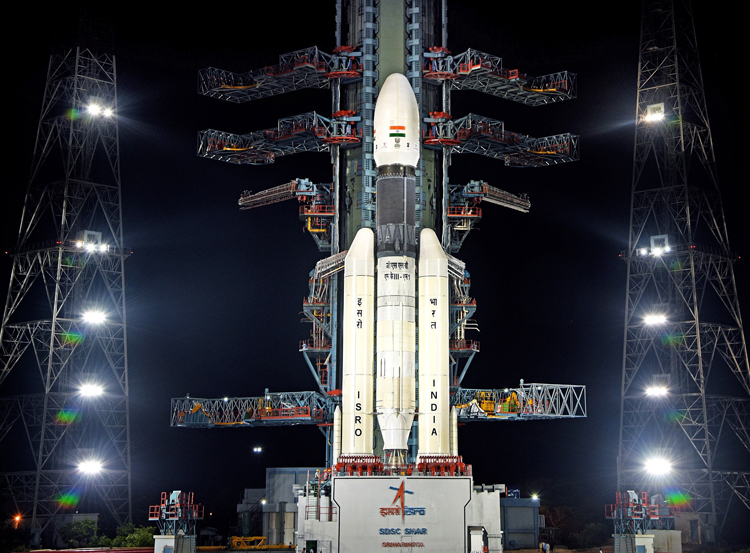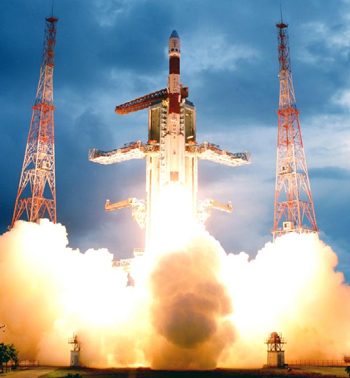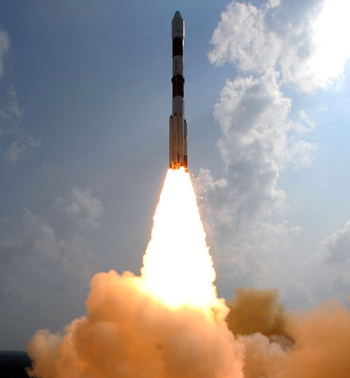INDIAN ARMED FORCES CHIEFS ON OUR RELENTLESS AND FOCUSED PUBLISHING EFFORTS

The insightful articles, inspiring narrations and analytical perspectives presented by the Editorial Team, establish an alluring connect with the reader. My compliments and best wishes to SP Guide Publications.

"Over the past 60 years, the growth of SP Guide Publications has mirrored the rising stature of Indian Navy. Its well-researched and informative magazines on Defence and Aerospace sector have served to shape an educated opinion of our military personnel, policy makers and the public alike. I wish SP's Publication team continued success, fair winds and following seas in all future endeavour!"

Since, its inception in 1964, SP Guide Publications has consistently demonstrated commitment to high-quality journalism in the aerospace and defence sectors, earning a well-deserved reputation as Asia's largest media house in this domain. I wish SP Guide Publications continued success in its pursuit of excellence.
India: A Space Super Power
India is running a vibrant space programme for its security, economic development and technological progress. So far, India has launched 115 satellites; three in 1970s, 11 in 1980s, 16 in 1990s, 24 in first decade of 21st century and 61 till date in current decade.
 |
The Author is Former Deputy Chief of the Air Staff and Air Officer Commanding-in-Chief, Central Air Command, IAF |

India started space research in 1962 and the Indian space programme run by 'Indian Space Research Organisation' (ISRO), from the very beginning focused on developing capabilities in three distinct fields related to 'Satellites for Communication and Remote Sensing', 'Space Transportation System' and 'Application Programmes'. India's first satellite 'Aryabhata' was launched in April 1975 using a Soviet Launcher. The 'Satellite Instructional Television Experiment (SITE)' programme conducted in 1975-76 using American Technology Satellite (ATS-6) was hailed as 'the largest sociological experiment in the world' that benefited around 200,000 people in 2,400 villages of six Indian states. ISRO has steered several projects to exploit space for development and welfare of Indians.
During 1980s, India designed and developed capabilities for in-orbit management of space systems together with the associated ground systems and also the development of Augmented Satellite Launch Vehicle (ASLV). During 1990's, India developed satellites for the multi-purpose Indian National Satellite (INSAT) and Indian Remote Sensing (IRS) programmes along with operationalisation of Polar Satellite Launch Vehicle (PSLV) and development of Geo-synchronous Satellite Launch Vehicle (GSLV). 21st century saw a giant leap in Indian space programmes.
India on July 22, 2019 successfully launched Chandrayaan-2 lunar mission, consisting of Orbiter, 'Vikram' Lander and 'Pragyan' Rover modules.
India launched its first lunar mission on spacecraft named 'Chandrayaan-1 in October 2008 with indigenously researched and developed technology. Chandrayaan-1 successfully entered lunar orbit in November 2008 and the 'Moon Impact Probe' separated and hard landed at the planned spot on Moon. Chandrayaan-1 discovered water over lunar surface and mapped the mineral and 3D topography of Moon. India is fourth country to reach Moon after USA, Russia and China. In recognition of Chandrayaan's key contribution, it received 'AIAA SPACE 2009' award from American Institute of Aeronautics & Astronautics and 'Space Pioneer Award 2009' from National Space Society of USA. Chandrayaan team received 'International Co-operation Award 2008' from International Lunar Exploration Working Group for carrying and testing largest number of international lunar payloads ever.

In November 2013, India launched its first inter-planetary mission to Mars on spacecraft named 'Mangalyaan', which successfully entered Martian orbit in September 2014. India is the fourth country to reach Mars after USA, Russia and EU, and first to reach in its first attempt. At a cost of 450 crore, Mangalyaan is the cheapest Mars mission till date. Mangalyaan planned for six months, actually worked for over four years and nearly 1000 coloured images sent by it have been released to public. Mangalyaan received 'Space Pioneer Award 2015' from National Space Society of US. China's foreign ministry spokesperson while congratulating India said "This is the pride of India and the pride of Asia, and is a landmark progress in humankind's exploration of outer space so we congratulate India on that."
India is running a vibrant space programme for its security, economic development and technological progress. So far, India has launched 115 satellites; three in 1970s, 11 in 1980s, 16 in 1990s, 24 in first decade of 21st century and 61 till date in current decade. Indian satellites are providing agriculture, communications, remote sensing, resource mapping, imaging, navigation, education, weather forecasting, cyclone prediction and disaster management applications. India holds the world record for highest number of satellites in a single launch by launching 104 satellites together. India has launched 'Indian Regional Navigation Satellite System' (IRNSS) to provide accurate position information service in India and the region extending up to 1500 km beyond its boundary with a position accuracy better than 20 m. IRNSS has eight satellites, of which three are in geostationary orbit and four in geosynchronous orbits. In May 2017, as a diplomatic initiative India launched 'South Asia Satellite' to provide communications, remote sensing, resource mapping and disaster management applications to its South Asian neighbours.
In November 2013, India launched its first inter-planetary mission to Mars on spacecraft named 'Mangalyaan'. India is the fourth country to reach Mars after USA, Russia and EU, and first to reach in its first attempt.
India today on July 22, 2019 at 1443 IST successfully launched Chandrayaan-2 lunar mission, consisting of Orbiter, 'Vikram' Lander and 'Pragyan' Rover modules. Orbiter has successfully established its orbit around Moon and Lander is planned to soft land on lunar South Pole on 07 September after which the Rover will move out on its wheels on the lunar surface for scientific experiments. Chandrayaan-2 has carried 13 Indian scientific payloads and NASA's 'Laser Retro reflector' payload free of cost.

Further, India has planned 'Aditya-L1', India's mission to the Sun in 2020. Launch of 'Gaganyaan', first Indian manned space mission is planned in 2022 or earlier. Gaganyaan will carry three Indians (Gagannauts??) into low earth orbit of 300-400 km for seven days. With the launch of Gaganyaan, India will join Russia, US and China in sending humans into space. Further, India has planned its own 20-ton Space Station by 2030 to conduct microgravity experiments.
The importance of space and satellites is growing at a rapid pace. India has become a major player in the global space racewith significant number of space assets. Defending and securing valuable Indian space assets is also a very important. In view of the growing reliance on space for economic and technological development, national security and military operations, and the need to ensure security of space assets, India successfully demonstrated its capability to hit a target in space with Anti-Satellite (ASAT) weapon in March 2019. India is the fourth country to do so after USA, Russia and China. India's ASAT capability is neither directed against any country nor a threat to any country but it is only to safeguard India's growing space assets bydissuading adversaries from interfering with Indian space assets and proliferating ASAT weapons.
India has planned the first Indian manned space mission is planned in 2022 or earlier. Gaganyaan will carry three Indians into low earth orbit of 300-400 km for seven days.
To further streamline exploitation of space, Indian government has decided to create Defence Space Agency (DSA), a joint organisation headed by Air Vice Marshal and manned by personnel drawn from Army, Navy and Air Force. DSA will coordinate and oversee all military activities in space including functioning of Defence Imagery Processing and Analysis Centre and Defence Satellite Control Centre for better exploitation of space resources through jointness between three services. DSA will also develop policies and doctrines for exploitation of space and its assets besides coordinating development of requisite deterrenceto protect Indian assets and interests in outer space. Further, Indian government has decided to create 'Defence Space Research Agency' (DSRA) headed by a scientist of Joint Secretary rank and manned by scientists. The task of DSRA is to develop space warfare weapons and technologies. DSA, DSRA, ISRO and Defence Research and Development Organisation (DRDO) will interact closely with each othertowardsresearch and development activities related to refining of the already demonstrated kinetic ASAT capability and further develop non-kinetic ASAT capabilities.
Having ticked all boxes towards achieving its aim of securing its assets in outer space, India will shortly conduct a table-top war game called 'IndSpaceEx' involving all stakeholders to validate strengths, weaknesses andvulnerabilitiesof its space policy and systems to draw lessons for their further improvement.
After a humble beginning in 1962, India has rocketed ahead to became a major space power. India's successful space programmes have encouraged it to launch very ambitious future projects that include another mission to the Moon, a mission to the Sun, manned space missionand setting up of its own Space Station. In addition to developing substantial space assets, India has successfully demonstrated its ASAT capability and is in the process to create institutions for better exploitation of space and its assets along with requisite capability to protect Indian assets and interests in outer space.





